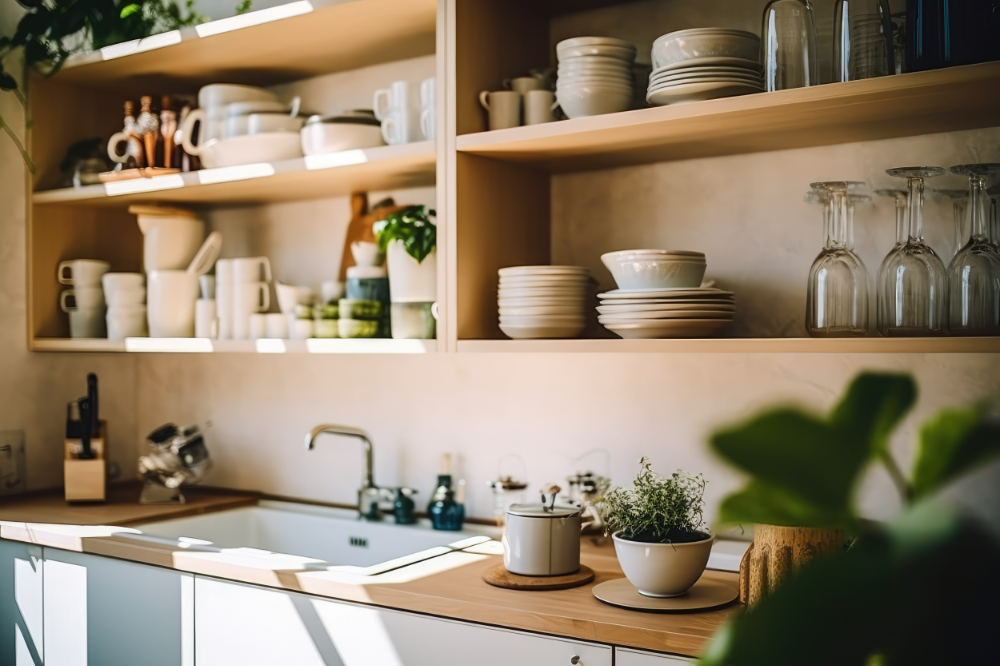Organizing a kitchen efficiently not only makes meal preparation more enjoyable but also helps keep your space tidy and functional. Whether you have a small kitchen or a spacious one, these steps will guide you in organizing your kitchen effectively:
Declutter First:
Before organizing, go through your kitchen and declutter. Remove items that are broken, unused, or expired. Donate or discard items you no longer need, including duplicate utensils or gadgets.
Categorize Your Kitchen Items
Take a close look at your kitchen layout and storage options. Consider how frequently you use each item and where they would be most accessible. This will help you decide where to place items for easy access.
Assess Your Kitchen Layout:
Group similar items together. For example, create categories for cookware, bakeware, utensils, food storage containers, pantry items, and cleaning supplies.
Create Zones:
Designate specific areas for different tasks, such as a baking zone, cooking zone, and beverage station. Keep related items and tools together in these zones for convenience, like pots and pans near the stove.

Keep Everyday Items Accessible:
Store everyday items like coffee mugs, plates, and glasses within easy reach. Reserve higher or lower shelves for less frequently used items.
Use Drawer Organizers:
Invest in drawer dividers or organizers to keep utensils, cutlery, and kitchen gadgets neatly separated and easily accessible. This prevents clutter and makes it easier to find what you need.
Maximize Cabinet Space:
Utilize your cabinet space efficiently by using stackable shelves, pull-out trays, or cabinet organizers. Store pots, pans, and lids together for convenience.
Organize the Pantry:
In your pantry or food storage area, use clear containers or bins to store dry goods like pasta, rice, and cereals. Label these containers for easy identification. Group similar items together (e.g., baking supplies, canned goods) and place frequently used items at eye level.
Arrange Spices and Seasonings:
Store spices and seasonings in a spice rack or drawer organizer where you can easily see and access them. Alphabetize or categorize them for quick identification.
Use Hooks and Pegboards:
Install hooks or a pegboard on a kitchen wall to hang pots, pans, utensils, and even cutting boards. This frees up cabinet and drawer space and adds a functional and decorative element to your kitchen.

Organize the Fridge and Freezer:
Regularly clean out your refrigerator and freezer. Use clear containers or bins to store leftovers and organize similar items together. Label and date items to minimize food waste.
Utilize Vertical Space:
If you have limited counter space, consider adding shelves or hanging storage on the walls to keep essentials close at hand without cluttering your workspace.
Maintain Regularly:
Once your kitchen is organized, make it a habit to maintain it. Regularly declutter, clean, and check for expired items to ensure your organized kitchen stays that way.
Label Containers:
Label containers as you use them, especially those in the pantry or freezer, to easily identify the contents and expiration dates.
Personalize Your Organization:
Tailor your kitchen organization to your cooking style and needs. What works best for one person may not work for another, so personalize your kitchen setup accordingly.
By following these steps and customizing them to your kitchen’s specific layout and your cooking habits, you can create an organized and efficient kitchen that enhances your culinary experience and reduces clutter.



